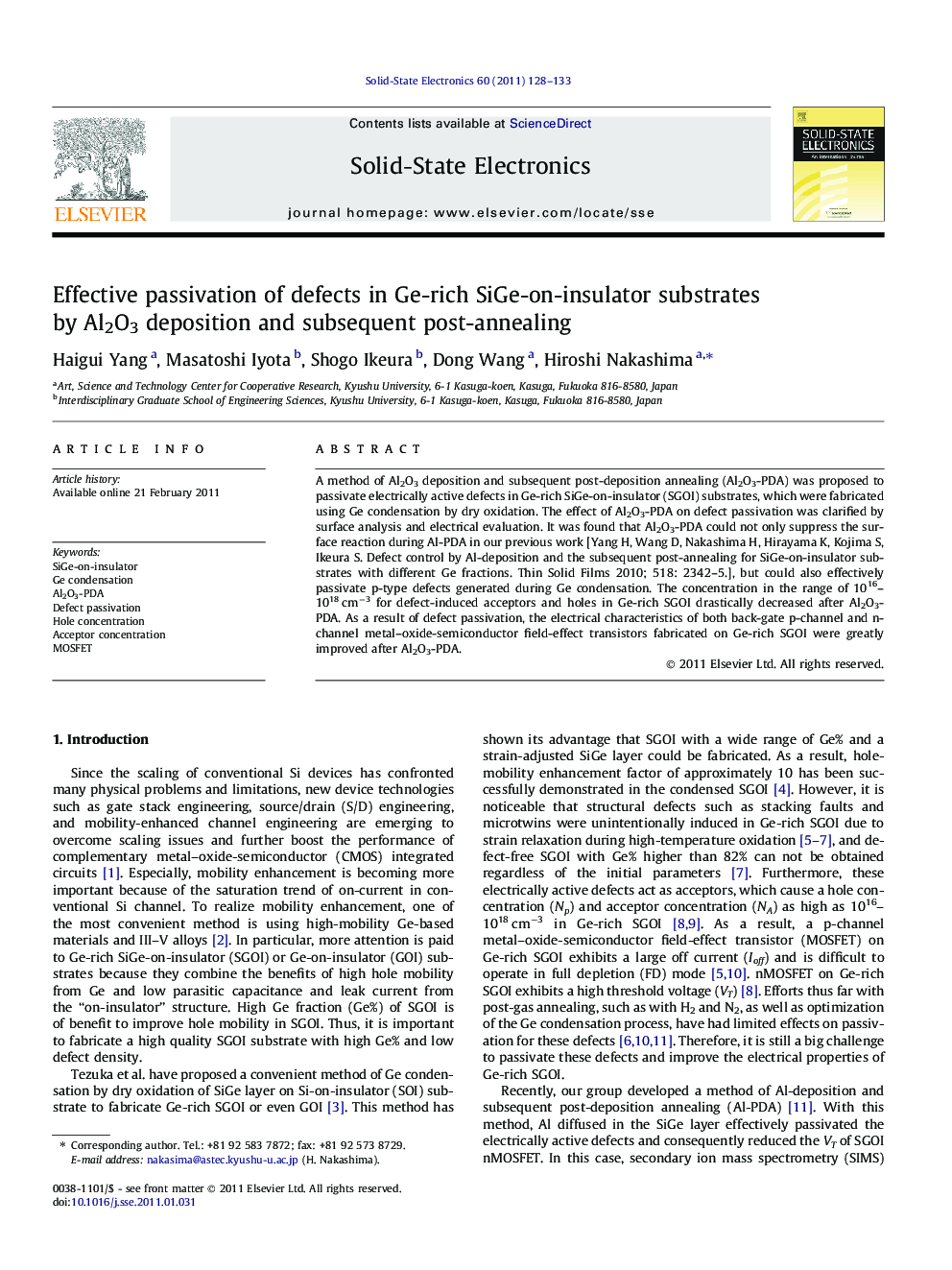| Article ID | Journal | Published Year | Pages | File Type |
|---|---|---|---|---|
| 748352 | Solid-State Electronics | 2011 | 6 Pages |
A method of Al2O3 deposition and subsequent post-deposition annealing (Al2O3-PDA) was proposed to passivate electrically active defects in Ge-rich SiGe-on-insulator (SGOI) substrates, which were fabricated using Ge condensation by dry oxidation. The effect of Al2O3-PDA on defect passivation was clarified by surface analysis and electrical evaluation. It was found that Al2O3-PDA could not only suppress the surface reaction during Al-PDA in our previous work [Yang H, Wang D, Nakashima H, Hirayama K, Kojima S, Ikeura S. Defect control by Al-deposition and the subsequent post-annealing for SiGe-on-insulator substrates with different Ge fractions. Thin Solid Films 2010; 518: 2342–5.], but could also effectively passivate p-type defects generated during Ge condensation. The concentration in the range of 1016–1018 cm−3 for defect-induced acceptors and holes in Ge-rich SGOI drastically decreased after Al2O3-PDA. As a result of defect passivation, the electrical characteristics of both back-gate p-channel and n-channel metal–oxide-semiconductor field-effect transistors fabricated on Ge-rich SGOI were greatly improved after Al2O3-PDA.
Research highlights► Al2O3-PDA was proposed to passivate electrically active defects in Ge-rich SGOI. ► Al2O3-PDA effectively suppressed the surface reaction during Al-PDA. ► Al2O3-PDA reduced the defect-induced acceptor concentration in Ge-rich SGOI. ► Al2O3-PDA greatly improves the electrical characteristics of Ge-rich SGOI.
